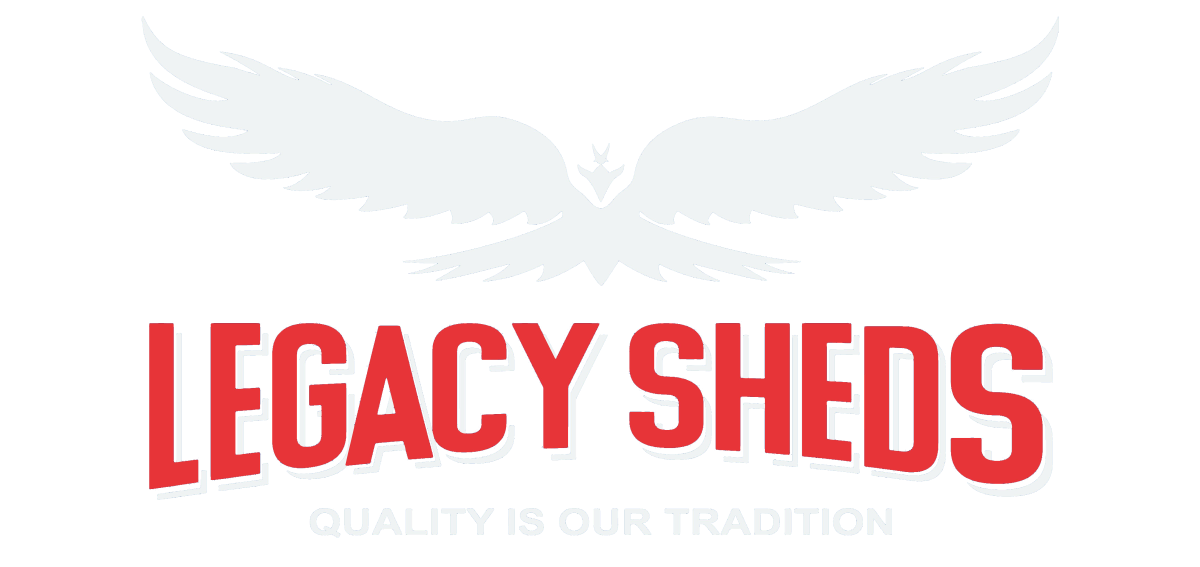Spring Shed Prep: Getting Ready for the Warmer Weather
Pickens, United States - March 14, 2025 / Legacy Shed Company /
As the snow melts and the temperatures begin to rise, your shed may need some attention to recover from the harsh winter months. The transition from winter to spring is the perfect time to ensure your shed is in top shape, protecting your tools, equipment, and any other valuables stored inside. Neglecting seasonal shed maintenance can lead to long-term damage, increased wear and tear, and costly repairs.
With the changing seasons, moisture, temperature fluctuations, and leftover debris from fall and winter can all take a toll on your shed’s structure and contents. Taking the time to perform proper maintenance now can prevent issues from escalating later. Let’s dive into everything you need to do to get your shed ready for the spring thaw.
Inspect the Shed for Winter Damage
The first step in preparing your shed for spring is conducting a thorough inspection. Winter weather can cause a variety of problems, from roof leaks to structural weaknesses. Look for the following:
Roof condition – Check for missing shingles, cracks, or sagging areas that may have been damaged by heavy snow or ice.
Walls and foundation – Examine the walls and foundation for cracks, holes, or signs of shifting. Frost heaving can cause structures to move, which can lead to gaps and instability.
Doors and windows – Open and close them to ensure they function properly. Check for misalignment, sticking, or drafts.
Leaks and moisture damage – Inspect the interior for signs of water damage, such as mold, mildew, or rotting wood. Pay special attention to corners and seams where moisture may have seeped in.
If you notice any issues, address them promptly to prevent further deterioration. Small problems, if left unchecked, can turn into expensive repairs later.
Clear Away Snow, Ice, and Debris
Spring thaw often means melting snow, ice, and accumulated debris around your shed. Clearing away these elements is crucial for preventing moisture buildup and structural damage.
Remove remaining snow and ice – Use a shovel or snow blower to clear away snow piles around the shed, ensuring water drains away from the foundation.
Check for standing water – Puddles forming around the shed can lead to wood rot and mold growth. Redirect water away by adjusting the slope of the ground or adding gravel.
Clear out leaves and debris – Dead leaves, branches, and other organic material can trap moisture, leading to decay. Rake up debris and dispose of it properly.
Keeping the area around your shed clear will not only enhance its appearance but also help prevent pest infestations and water-related damage.
Check for Pests and Rodent Damage
During the winter, rodents, insects, and other pests often seek shelter in warm, dry places—including your shed. Spring is the ideal time to check for any signs of infestation.
Look for droppings – Rodent droppings are a clear sign that mice or rats have taken up residence.
Check for gnawed wood and wires – Rodents often chew on wood and electrical wires, which can lead to costly damage.
Inspect for nests – Small piles of shredded paper, fabric, or insulation may indicate nesting sites.
Seal up entry points – Close off any gaps or holes that pests may have used to gain access. Steel wool and caulk are effective deterrents for small rodents.
If you notice a serious pest problem, consider using traps, repellents, or professional pest control services to ensure your shed remains rodent-free.
Clean and Organize the Interior
Once you’ve ensured the structure is sound and pest-free, it’s time to clean and organize the inside of your shed. A cluttered and dirty shed not only makes it harder to find what you need but also increases the risk of accidents and damage.
Declutter and remove unnecessary items – Get rid of broken tools, expired chemicals, or anything you no longer use. Consider donating or recycling usable items.
Sweep and dust – Clear out dust, dirt, and cobwebs that accumulated over the winter. Pay extra attention to shelves and corners.
Check for rust and corrosion – Inspect metal tools, shelves, and equipment for signs of rust. Use a wire brush or rust remover to clean affected areas.
Organize with shelves and hooks – Install shelves, pegboards, and hooks to keep tools and equipment neatly stored and easily accessible.
A well-organized shed makes it easier to work efficiently and protects your items from unnecessary wear and tear.
Repair and Protect Wooden Surfaces
If your shed is made of wood, moisture from melting snow and spring rain can lead to deterioration if it isn’t properly maintained. Take the following steps to protect wooden surfaces:
Seal gaps and cracks – Use wood filler or caulk to seal small cracks that could let in water.
Apply a fresh coat of paint or stain – If the exterior paint or stain is peeling, consider applying a new coat to protect the wood from moisture and UV damage.
Check the flooring – If your shed has a wooden floor, inspect it for soft spots, warping, or mold growth. Replace any damaged sections to maintain structural integrity.
Properly maintaining wooden surfaces will extend the life of your shed and keep it looking great for years to come.
Inspect and Maintain Tools and Equipment
Spring is the time to get your outdoor tools and equipment ready for use. Ensure everything is in working order before you need it.
Check power tools – Inspect cords, batteries, and motors to ensure they function correctly. Replace any damaged parts.
Sharpen blades – Lawn mowers, shears, and other cutting tools should be sharpened to ensure efficient performance.
Oil and lubricate moving parts – Use lubricant on hinges, locks, and metal tools to prevent rust and ensure smooth operation.
Test fuel-powered equipment – If you have gas-powered tools like trimmers or chainsaws, check fuel levels, change the oil if necessary, and replace old spark plugs.
Taking care of your tools now will save you time and frustration when it’s time to tackle outdoor projects.
Improve Ventilation and Moisture Control
As temperatures rise, humidity levels inside your shed can increase, leading to mold and mildew growth. To prevent moisture-related issues, focus on ventilation:
Open windows and vents – Allow fresh air to circulate and dry out any residual dampness.
Install a dehumidifier – In particularly humid climates, a small dehumidifier can help keep moisture levels in check.
Use moisture-absorbing materials – Place silica gel packets, charcoal, or moisture-absorbing crystals inside your shed to reduce humidity.
Keeping moisture levels under control will prevent wood rot, rust, and mildew from damaging your shed and its contents.
Conclusion
Preparing your shed for the spring thaw is an essential task that helps maintain its durability, functionality, and appearance. By inspecting for damage, clearing away debris, checking for pests, cleaning and organizing the interior, protecting wood surfaces, maintaining tools, and improving ventilation, you can ensure your shed remains in excellent condition for the season ahead.
Taking a proactive approach to shed maintenance will save you time, money, and hassle in the long run, allowing you to enjoy a well-organized and functional space for all your outdoor needs.
Frequently Asked Questions
1. How often should I perform seasonal shed maintenance?
It’s best to perform a thorough inspection and maintenance routine at least twice a year—once in the spring and again in the fall.
2. What’s the best way to prevent moisture buildup inside my shed?
Ensure proper ventilation by opening windows, using vents, and placing moisture-absorbing materials inside. Sealing gaps and applying weatherproof coatings also help.
3. How do I keep rodents out of my shed?
Seal any entry points, remove food sources, and use traps or deterrents like steel wool and peppermint oil.
4. Should I repaint or stain my wooden shed every year?
Not necessarily. Typically, a good-quality paint or stain lasts 3–5 years. However, inspect annually and touch up any damaged areas.
5. What’s the best way to store garden tools to prevent rust?
Keep tools dry, clean them after each use, and store them on hooks or shelves rather than directly on the ground. Applying a light coat of oil can also help prevent rust.

Contact Information:
Legacy Shed Company
217 Erin Ln
Pickens, SC 29671
United States
Shannon Haskett
(864) 507-0000
https://legacyshedcompany.com/
Original Source: https://legacyshedcompany.com/media-room/#/media-room


